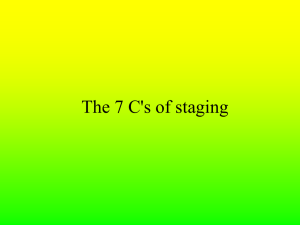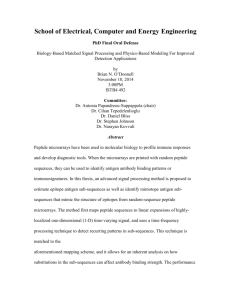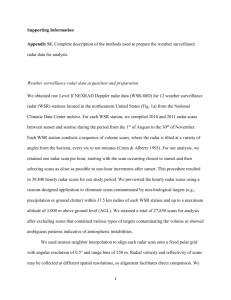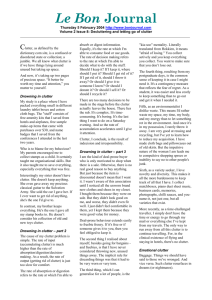development of fuzzy-logical two-step ground clutter detection
advertisement
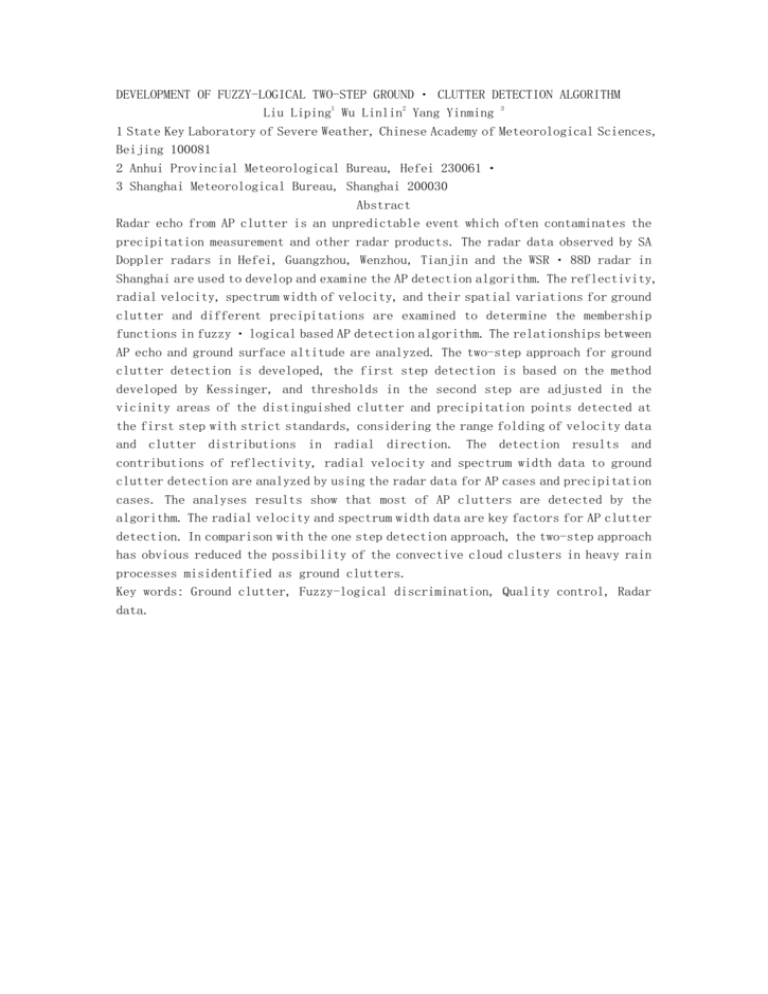
DEVELOPMENT OF FUZZY-LOGICAL TWO-STEP GROUND CLUTTER DETECTION ALGORITHM 1 2 3 Liu Liping Wu Linlin Yang Yinming 1 State Key Laboratory of Severe Weather, Chinese Academy of Meteorological Sciences, Beijing 100081 2 Anhui Provincial Meteorological Bureau, Hefei 230061 3 Shanghai Meteorological Bureau, Shanghai 200030 Abstract Radar echo from AP clutter is an unpredictable event which often contaminates the precipitation measurement and other radar products. The radar data observed by SA Doppler radars in Hefei, Guangzhou, Wenzhou, Tianjin and the WSR 88D radar in Shanghai are used to develop and examine the AP detection algorithm. The reflectivity, radial velocity, spectrum width of velocity, and their spatial variations for ground clutter and different precipitations are examined to determine the membership functions in fuzzy logical based AP detection algorithm. The relationships between AP echo and ground surface altitude are analyzed. The two-step approach for ground clutter detection is developed, the first step detection is based on the method developed by Kessinger, and thresholds in the second step are adjusted in the vicinity areas of the distinguished clutter and precipitation points detected at the first step with strict standards, considering the range folding of velocity data and clutter distributions in radial direction. The detection results and contributions of reflectivity, radial velocity and spectrum width data to ground clutter detection are analyzed by using the radar data for AP cases and precipitation cases. The analyses results show that most of AP clutters are detected by the algorithm. The radial velocity and spectrum width data are key factors for AP clutter detection. In comparison with the one step detection approach, the two-step approach has obvious reduced the possibility of the convective cloud clusters in heavy rain processes misidentified as ground clutters. Key words: Ground clutter, Fuzzy-logical discrimination, Quality control, Radar data.
